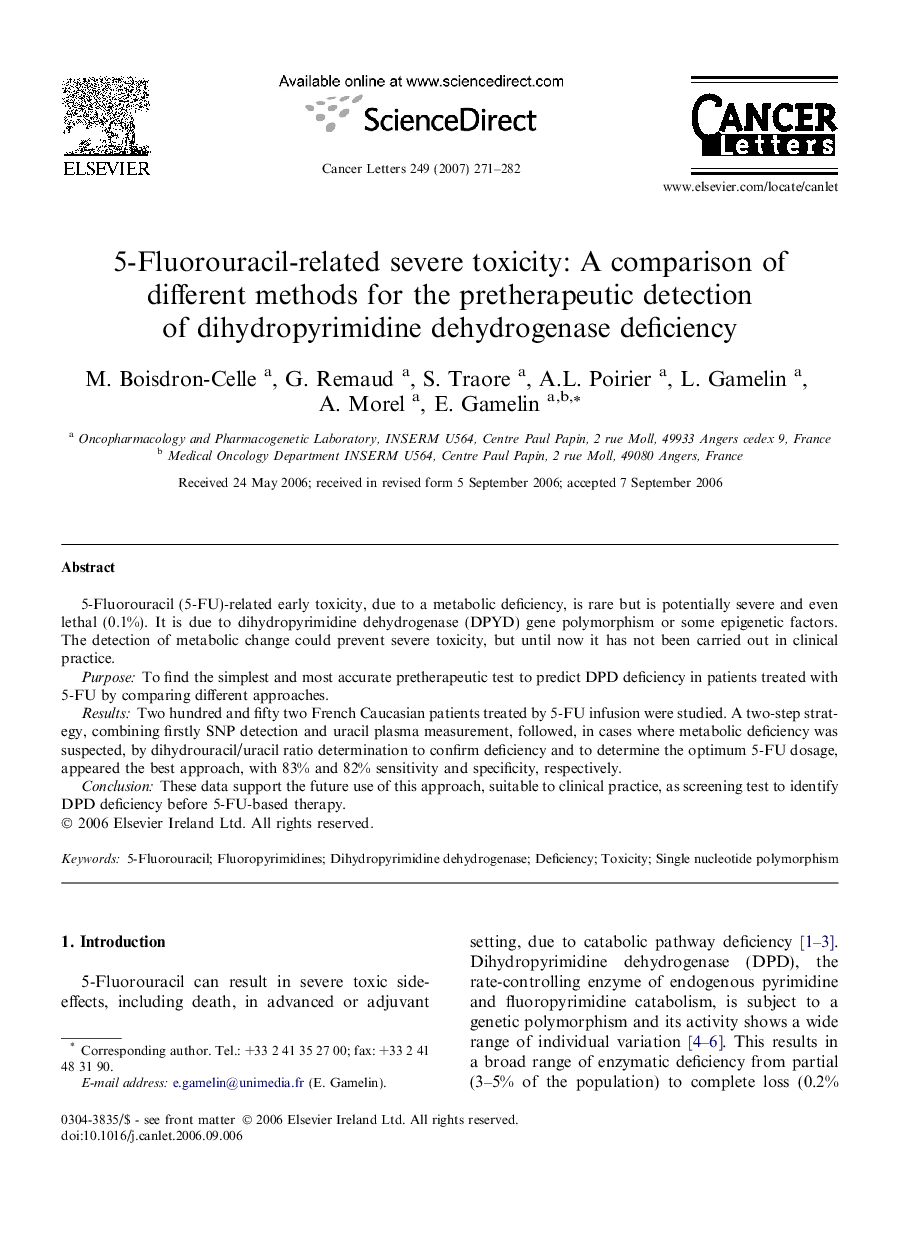| کد مقاله | کد نشریه | سال انتشار | مقاله انگلیسی | نسخه تمام متن |
|---|---|---|---|---|
| 2115414 | 1084594 | 2007 | 12 صفحه PDF | دانلود رایگان |

5-Fluorouracil (5-FU)-related early toxicity, due to a metabolic deficiency, is rare but is potentially severe and even lethal (0.1%). It is due to dihydropyrimidine dehydrogenase (DPYD) gene polymorphism or some epigenetic factors. The detection of metabolic change could prevent severe toxicity, but until now it has not been carried out in clinical practice.PurposeTo find the simplest and most accurate pretherapeutic test to predict DPD deficiency in patients treated with 5-FU by comparing different approaches.ResultsTwo hundred and fifty two French Caucasian patients treated by 5-FU infusion were studied. A two-step strategy, combining firstly SNP detection and uracil plasma measurement, followed, in cases where metabolic deficiency was suspected, by dihydrouracil/uracil ratio determination to confirm deficiency and to determine the optimum 5-FU dosage, appeared the best approach, with 83% and 82% sensitivity and specificity, respectively.ConclusionThese data support the future use of this approach, suitable to clinical practice, as screening test to identify DPD deficiency before 5-FU-based therapy.
Journal: Cancer Letters - Volume 249, Issue 2, 8 May 2007, Pages 271–282